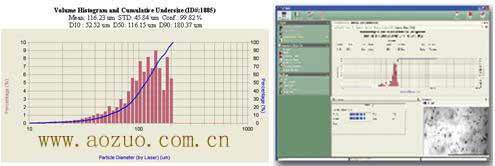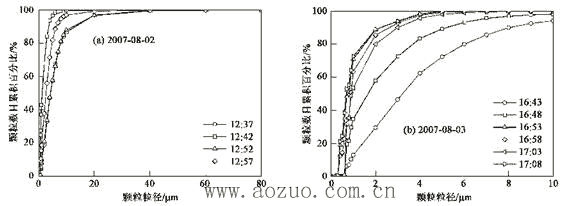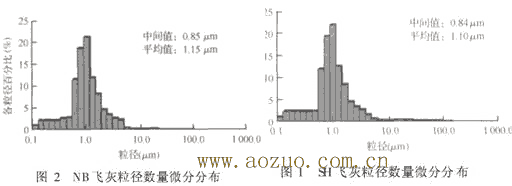AZ-S0300 soil particle size measurement system
1 Introduction
Soil is composed of three phases of liquid, gas, and solid. Soil particles with different particle sizes are an important part of soil. The purpose of soil particle size and shape analysis is to determine the composition of soil particles with different particle sizes and to determine the soil texture. Soil texture is one of the most basic characteristics of soil and an important basis for soil classification. It has an important impact on soil fertility, soil nutrient transport, soil moisture characteristic curve and soil erodibility.
At present, there are many methods for measuring soil particle size and shape, including sieving method, sedimentation method, laser diffraction method, electrical resistance method and static image method. For a detailed introduction to these methods, you can refer to the relevant books, so I wo n’t go into details here. It is worth noting that in the laser diffraction method, the theoretical basis is FRAUNHOFF diffraction or MIE scattering theory, both of which are based on the diffraction of particles in the focal plane and the strength of the scattered signal to estimate the particle size. In the traditional image method, the computer software is used to process and calculate the collected images with the help of a microscope, camera or digital camera and a graphics acquisition card, so as to obtain the particle size and shape parameters. Considering the small number of particles measured by this method at a single time, the method of changing the field of view is generally used for multiple measurements to improve the authenticity of the test results.
2 Measurement system design
2.1 Objective
The AZ-S0300 soil particle size and shape measurement system uses a unique dual-channel technology to study the particle size and particle size distribution in soil, sludge, river bed sediments, fly ash, cement and other samples. Its laser channel uses the laser photoresist method (also called time conversion theory or laser pulse analysis method) that conforms to the ISO standard, which overcomes the shortcomings of traditional laser particle size analyzers that are only suitable for analyzing pure objects (traditional laser diffraction method must know the sample's optical Characteristics, and most of the environmental samples are complex in composition and the optical characteristics are not fixed), the measurement process does not depend on any physical characteristics of the sample, and realizes physical property-free detection; in addition, its Video channel uses dynamic particle shape analysis technology, which is very The accuracy of the analysis is greatly improved and the time required for the analysis is shortened. The flexible and modular configuration of the AZ-S0300 soil particle size and shape observation system can meet the needs of different types of dry and wet detection methods, and can also meet the measurement needs of liquid, emulsion, paste, film, aerosol and other samples.

2.2 Collection of soil samples
Under natural conditions, a representative typical area is selected as the sampling plot; under experimental research conditions, a specific area is selected as the sampling plot according to the purpose of the study. According to the conditions of plot type, openness and flatness, soil homogeneity and other conditions, "plum blossom", "checkerboard", "S-shape" and "grid method" can be selected for layout. For the same type of soil samples, at least 3 soil samples are taken as repeat. The time and frequency of sample collection are determined according to the research object and purpose. For specific operations and details, please refer to the relevant sections in Soil Physical and Chemical Analysis.
2.3 Measurement index
The AZ-S0300 soil particle size measurement system uses a unique laser and video dual-channel detection technology, which can obtain the particle morphology and sample dispersion information while performing laser particle size detection, and can quantify the particle shape of the obtained image analysis. Can get nearly 40 parameters:
Particle number distribution, D10 / D50 / D90 particle size distribution, particle surface area distribution, particle volume distribution, average particle size, volume average particle size, surface area average particle size, number average particle size, equivalent area diameter, Fret ( Feret) diameter and its maximum / minimum / average value, slenderness ratio, roundness, perimeter, fractal dimension, shape factor, unevenness and ovality, etc.
2.4 Composition of measuring system
AZ-S0300 soil particle size and shape measurement system consists of soil sampling unit, laser particle size analyzer host, laser measurement head, video microscope, measurement cell module (with magnetic disturbance measurement cell, mechanical disturbance measurement cell, liquid flow measurement cell, flowing liquid It consists of measuring cell, fiber measuring cell, aerosol measuring cell, micro-flow measuring cell, heating measuring cell, free-fall measuring cell, thin layer measuring cell, etc., and particle shape analysis software.
3 Data processing
Comprehensive information generated by laser and video analysis is easily obtained through intuitive data reporting software. The measurement results can be displayed in various tables and graphs. These tables and graphs can be selected by the user in order to correctly display the required information. Through data mining technology, it is easy to implement data comparison and analysis, allowing editing of overlays and comparison tables. With a single mouse click, a sample analysis report in word format can be generated. The file includes sample preparation, particle size and particle shape results, as well as graphics and video information.

3.1 Supplement the size information with the shape information of the particles
Shape information is a two-dimensional supplement to the particle size distribution. For example, particles of similar size may differ greatly in shape. For accurate characterization of non-spherical particles, two-dimensional shape information is necessary. The difference in shape can be reflected from the particle shape distribution. Dynamic image analysis uses a digital camera to capture the best particle image for processing. The obtained image can be analyzed by a complex image analysis program to obtain image information; it can also be stored and analyzed later.

3.2 Understanding the particle system
The shape and size related data obtained by dynamic image analysis provides rich information for each particle, which can be displayed in a scatter plot to observe the particle size-shape trend of the sample.
The shape filter has the same function as the optical filter, and the user can enlarge and observe a specific part of the sample in the sample according to the size or shape characteristics.
3.3 Detection of small parts
The laser photoresist method used in the laser channel has obvious advantages in special applications, such as detecting small parts that only occupy 1% or less of the sample volume, or analyzing very large particles in the sample with higher resolution.
4 Application case
4.1 Application of AZ-S0300 soil particle size measurement system in the study of roof runoff particle distribution
Researchers from the State Key Laboratory of Pollution Control and Resource Research at Tongji University applied the AZ-S0300 soil particle size and particle shape observation system to monitor the six rainfall runoffs on a concrete roof beside a traffic trunk in Shanghai, and analyzed the particles in the roof runoff The particle size distribution results show that the particle size distribution change process is closely related to the flow process, the proportion of small particles gradually increases in the initial runoff, and when the rainfall intensity is encountered again, the roof will produce more With particles, the proportion of large particles increases, and then as the runoff continues, the proportion of small particles increases rapidly.

4.2 Application of AZ-S0300 soil particle size measurement system in the study of physical and chemical properties of waste incineration fly ash
Researchers at the University of Science and Technology Beijing used the AZ-S0300 soil particle size and particle shape observation system to study the physical properties of two domestic waste incineration fly ash in detail. The results show that the differential distribution of the two types of fly ash particle diameters is very close Their median particle size is 0.84 μm and 0.85 μm, and the average particle size is 1.10 μm and 1.15 μm, respectively. There are basically no particles exceeding 40 μm in the two types of fly ash.

Stainless Steel Welding Bucket
Stainless Steel Welding Bucket,Cookware Stainless Steel Stock Pot,Stainless Steel Cookware,The Soup Bucket With Lid
Jiangmen Vanky Stainless Steel Products Co., Ltd. , https://www.vankystar.com